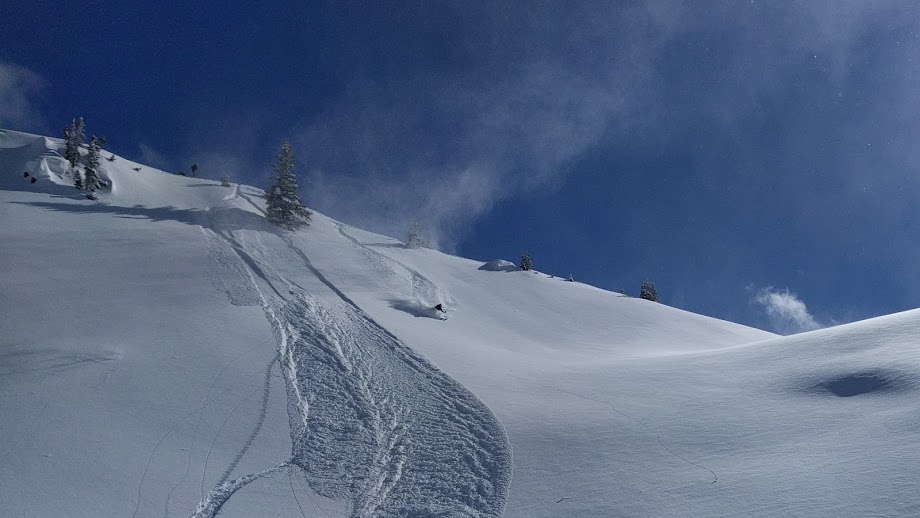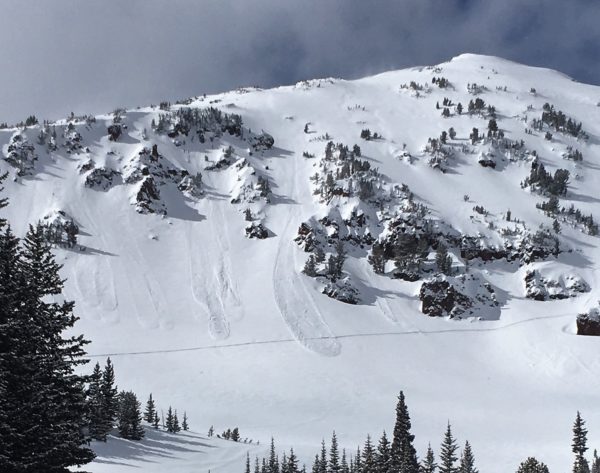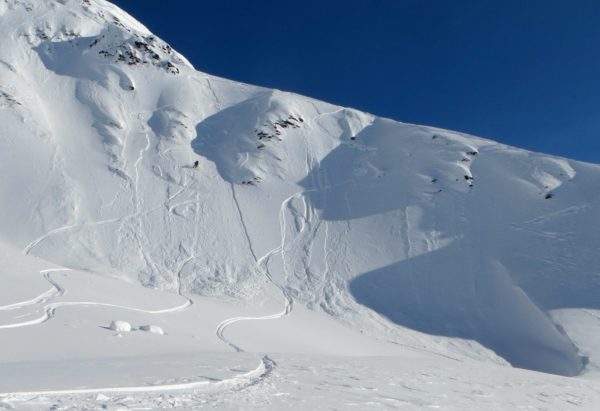Release of dry unconsolidated snow.
These avalanches typically occur within layers of soft snow near the surface of the snowpack. Dry Loose avalanches start at a point and entrain more snow as they fan out and move downhill. They vary in size, depending on how much snow is entrained and on the size of the terrain feature where they occur. Dry Loose avalanches can act as a trigger for slab avalanches. Dry Loose avalanches are the simplist problem to manage because of their predictable behavior and relatively smaller sizes. They are most hazardous if you are caught and carried into a terrain trap such as a gully, cliff, couloir, or thick trees. Management strategies include sluff management and/or choosing less consequential terrain when this problem develops, commonly with new snow or weakening surface snow.

Dry Loose avalanches are the most predictable problem to manage because they release just below the trigger and entrain soft surface snow. Credit: Crested Butte Avalanche Center


